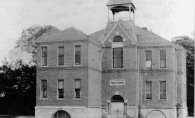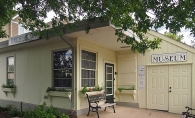Chris Faust entered the field of photography in college working in a dark room. He worked in medical and scientific photography before transitioning to artistic photography in the late 1980s. Today, he is best known for his panoramic and landscape photography.
A dedicated user of film cameras who develops his own photos in black and white, Faust says he is “a road less traveled kind of guy.” He prefers to capture cultural landscapes, rather than “pretty pictures,” he says. To Faust, photography is about documenting reality, so he doesn’t do scene modification. “[Photographs are] about what you see and the light,” he says.
In recent years, Faust has focused on night photography and re-photography, the practice of returning to a site after a period of time to recreate a photo. Faust’s Revisiting Twain’s Mississippi: New Photographs recreates photos of the Mississippi River from the 1880s.
Exotic places and scenes are not required for an image to be exceptional, in his view; everyday sights can be equally striking. Faust’s suburban documentation project, which captured development of suburbs across six states in the 1990s, demonstrates this. The Edge, one of his most popular pieces, shows the border of suburban development and grassland. Like many of his photos, it aims to strike a person’s creative memory, or sense-based emotional reaction to art.
Faust has done a number of commissioned projects through the years. As one of 12 photographers commissioned by the Minnesota Historical Society to document the lives of Minnesotans in 2000 for the Minnesota 2000 project, Faust printed 30 photos of the Minnesota River Valley. Ten of these were published in Minnesota in Our Time: A Photographic Portrait, published by the Minnesota Historical Society Press.
Faust’s photographs are in the collections of the Walker Art Center, Minneapolis Institute of Arts and the Minnesota Historical Society, among other museums. His Mississippi River photos will be on display at Hopkins Center for the Arts beginning June 25. More information about Faust’s work can be found on his website, studio210.org.









